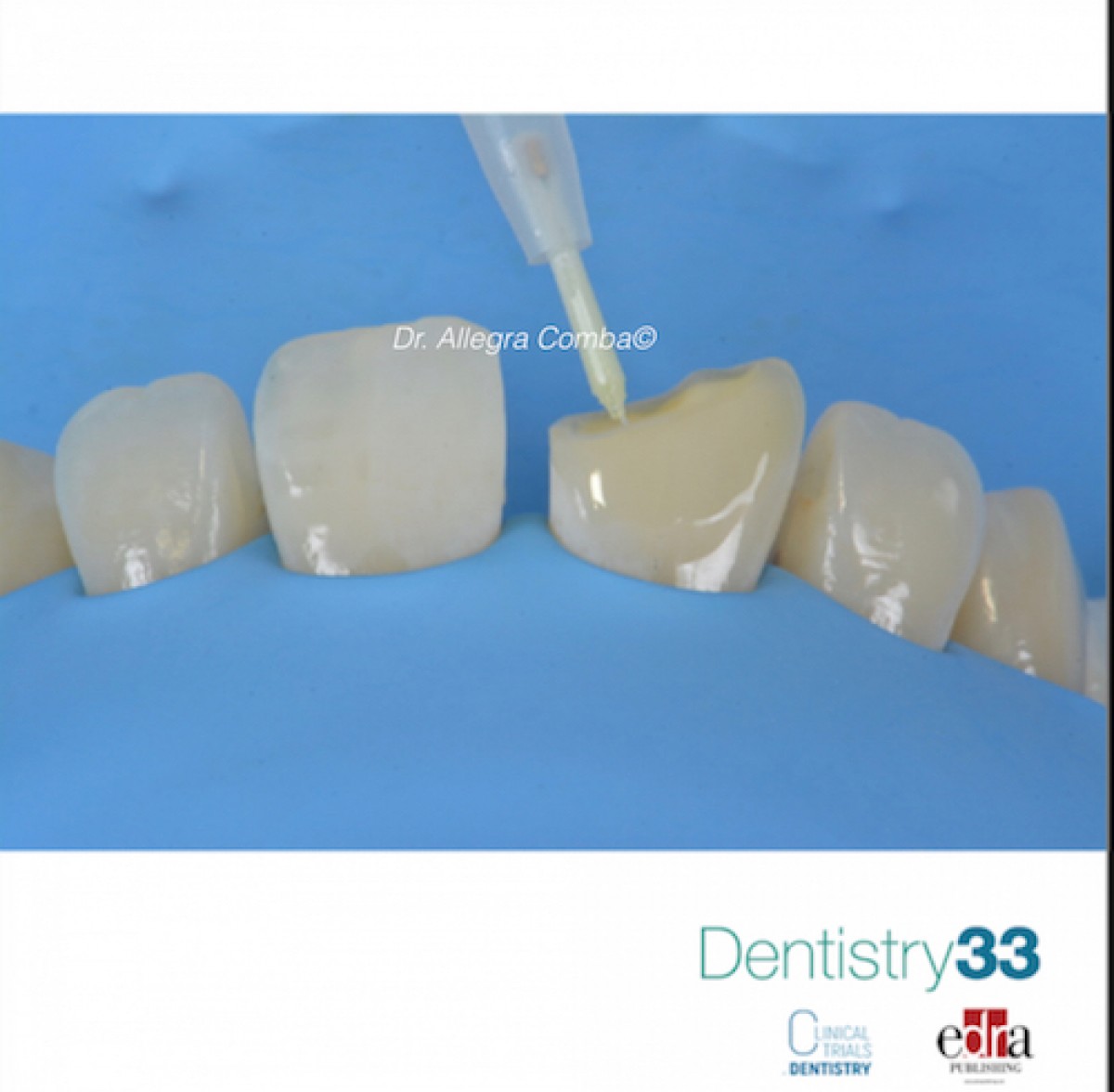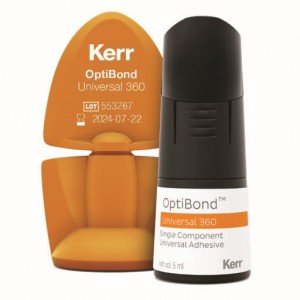
Preheating and bioactive development of a unidose 3-step etch-and-rinse dentin adhesive
Co-authors: A. Comba, F. Florenzano
Lorenzo Breschi
Nowadays, the resin-dentin bond remains an issue for the durability of the adhesive direct restorations .
The pre-heating of restorative materials is a recurrent tendency to increase theirs physical and mechanical properties.
In the present laboratory work Prof. Magne and Dr Ubaldini evaluated the influence of pre-heating together with the inclusion of a bioactive glass in a unidose 3-step etch-and-rinse adhesive system on adhesive strength.
Material and methods
The authors prepared dentin disks from 80 molars and assigned them to 8 groups (n=10): in CG-T1 and CG-T2 the adhesive system was used without any modification, in PG- T1 and PC-T2 both the components were preheated at 68°C just before the application. In BG-T1 and BG-T2 a bioactive glass was added to the primer. In PBG-T1 and PBG-T2, the adhesive system received both modifications, its primer was modified by adding 0.05 mg of BAG, and both primer and bond components were preheated as previously indicated.
The dentin surfaces were treated with 35% phosphoric acid (Ultra Etch 35%; Ultradent Products, Inc) for 15 seconds and rinsed for 1 minute. Primer was lightly rubbed on the dentin for 30 seconds and air dried for 5 seconds. Adhesive was applied with a light brushing motion for 30 seconds and polymerized for 20 seconds at 1000 mW/cm2 by using a light-emitting diode unit (VALO Curing Light; Ultradent Products, Inc). Then a direct restoration was performed (Filtek Z100; 3M) covering the entire dentin. All restored specimens were stored in distilled water at room temperature for 1 week (T1) or 6 months (T2, water replaced weekly) before testing.
TBS data were analyzed by the authors and scanning electron microscopy was added to analyze the failure mode. Attenuated total reflection Fourier transform infrared spectroscopy was used to quantitatively analyze the modifications to the chemical structure of the group tested.
Results
From the collected results, the two authors found that TBS results reveald significant differences for the different pretreatment but not for the variable storage time. The preheated group (PG-T1) provided significantly stronger bond strength when compared with the other groups . Failure modes were mostly adhesive. Attenuated total reflection Fourier transform infrared spectroscopy performed by the researchers showed that preheating the bonding agent promoted the condensation reaction between the silane and adhesive fillers .
Conclusion.
Considering the results obtained with the present in vitro research Prof. Magne and Dr Mori Ubaldini concluded no decrease in mTBS was observed for any group after 6 months. In addition, preheating the adhesive system (primer and bonding resin) significantly increased the 1-week and 6-month mTBS. Finally, the inclusion of bioglass did not affect the bond strength.
(Photocredit: Dr. Allegra Comba)
For more information: Thermal and bioactive optimization of a unidose 3-step etch-and-rinse dentin adhesive.
 Related articles
Related articles
Products 16 January 2025
With direct and indirect dental restorations, a strong, durable, and versatile universal adhesive often determines short- and long-term success.
Restorative dentistry 21 March 2024
How does the universal adhesive’s film thickness affect its ability to effectively bond to dentin?
Modern composite restorations rely on increasingly efficient adhesive systems, but sometimes it is not clear how thick the adhesive layer needs to be.
Prosthodontics 19 March 2024
Zirconia crowns and self-adhesive resin cements: evaluation of success after 5 years
Computer-aided design (CAD) and computer-aided manufacturing (CAM) technology has led to a massive increase in the production of zirconium crowns.
Restorative dentistry 06 February 2024
Which restorative adhesive strategies to adopt in root caries
In recent decades, the development of adhesive systems has progressed, also providing for a reduction in work phases. Therefore, several adhesive strategies have potentially been established to offer...
Restorative dentistry 31 August 2023
Effect of denture adhesive for dry mouth on retentive force of experimental palatal plates
While previous studies on models have shown the effectiveness of denture adhesives in terms of retention and cleanability, no reports have evaluated their effectiveness in the oral cavity.
 Read more
Read more
Editorials 10 October 2025
With proud smiles and crisp white coats, ninety-three learners from the DDS Class of 2029 and the International Dentist Pathway Class of 2028 marked the start of their dental careers at the UCSF...
Periodontology 10 October 2025
Continuous professional development (CPD) in Periodontology refers to the overall framework of opportunities that facilitate a life-long learning practice, driven by the learner-practitioner and...
TheraBreath, the #1 alcohol-free mouthwash brand in the U.S.*, has introduced a new line of dentist-formulated, clinically tested toothpastes designed to support professional oral care...
News 10 October 2025
New officers and trustees were installed at the Minnesota Dental Association’s Leadership Conference on September 19 in Minneapolis.
News 10 October 2025
Smartee Denti-Technology today announced that Professor Gang Shen, its Chief Scientist and Executive President of TaiKang ByBo Dental, has once again been named to the World’s Top 2% Scientists...















